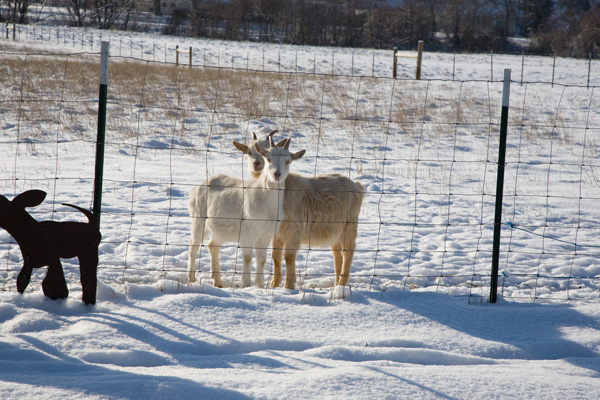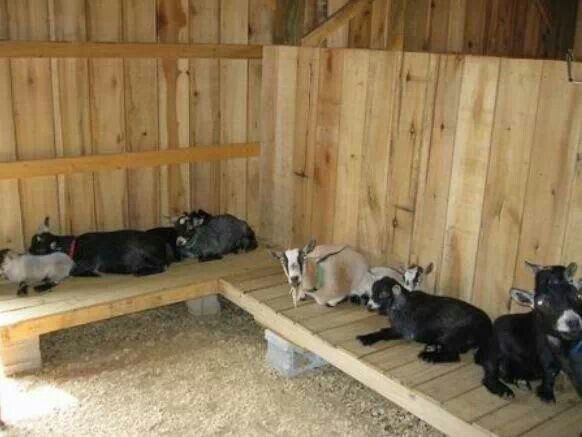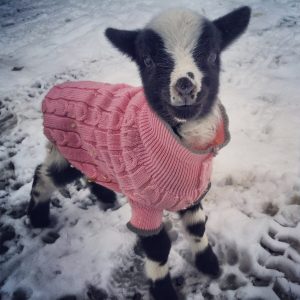From Alaska to New Hampshire, adult goats can handle sub zero temperatures, however we’ve listed some winter care tips for your goats to avoid the obvious and most common pitfalls owners run into during extreme cold.
First, know that goats are covered during winter with a thick undercoat of cashmere. It is intended to protect them from the cold and dampness and works very well. Focus on their shelter and basic essentials.
While goats are fairly hardy, if you normally keep your animals in open or three sided shelters, winter is the time to move them indoors, especially during strong winds or heavy snows.

Air circulation is vital. Just like chickens and their coops, the buildup of ammonia from their urine can irritate lungs and lead to pneumonia, which is a leading cause of death in goats. Avoid insulating walls and sealing every gap as you would your home. Keep the door shut when its 20 degrees out, but allow air to escape via ie exposed eaves or spaces between boards. For your animals to breathe, so must their shelter.

Layer the floor with straw. You can get goats off the cold ground by simply placing pallets in their pens with more straw. Dogloos, pet carriers, rain barrels cut out on the end or similar small secondary shelters inside can also aide in staying warm. Line them with straw as well and try to keep them clean. Goats are known to huddle together to share warmth, especially kids. They should always have a mate. Goats are herd animals and naturally seek companionship.

The “Deep Litter Method” is a common practice defined by periodically layering fresh straw over existing straw, similar to sleeping with multiple blankets in bed. As the older straw breaks down, the composting action generates heat. The downside is the extensive amount of work required to clean your goat pen during the spring.
Maintaining fresh, clean water daily must be a priority. They love warm water and will drink a lot of it. Don’t let it freeze. Electric heated water bowls are another option and available at most any farm supply store.
Use caution when using or installing heat lamps, especially inside the pen. Considering a goat’s curious nature and the inherent risk of fire heat lamps should be limited to newborns and kids when possible. Unfortunately, it isn’t unusual for goats to be born in the middle of winter. They are born wet, and their mothers will lick them to remove the afterbirth. You should be present during birth to assist in drying and cleaning. As baby goats don’t have an undercoat to protect them, you can cover them with blankets or cut up an old sweatshirt and slide over their torso. Keep them dry and watch for signs of frostbite along areas such as their ears. During extreme cold; frostbitten ears may become swollen or crust after a few days. Once it occurs there isn’t much you can do. While losing the tip or portion might not be pretty, it is rarely terminal.
Don’t underestimate the ability of your goats to exist in harsh climates with a little supervision, some routine maintenance and preventative measures.
See also 5 Best Dairy Goat Breeds For The Small Farm
















